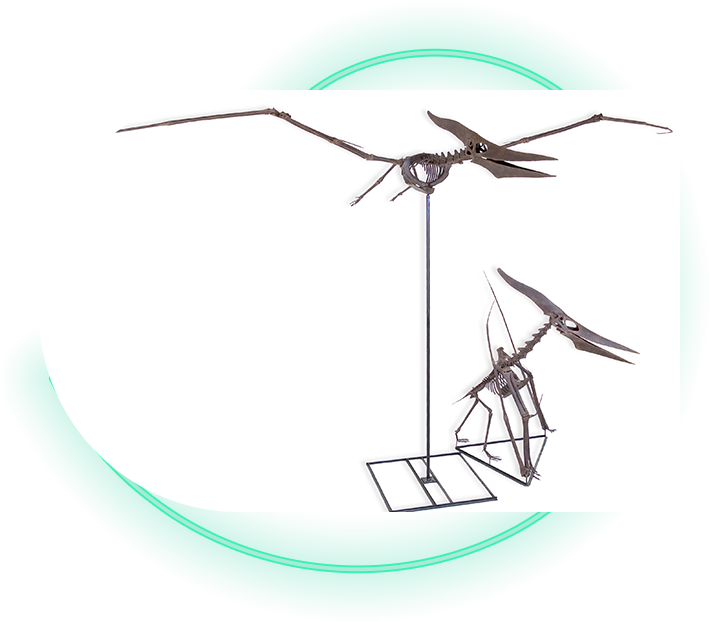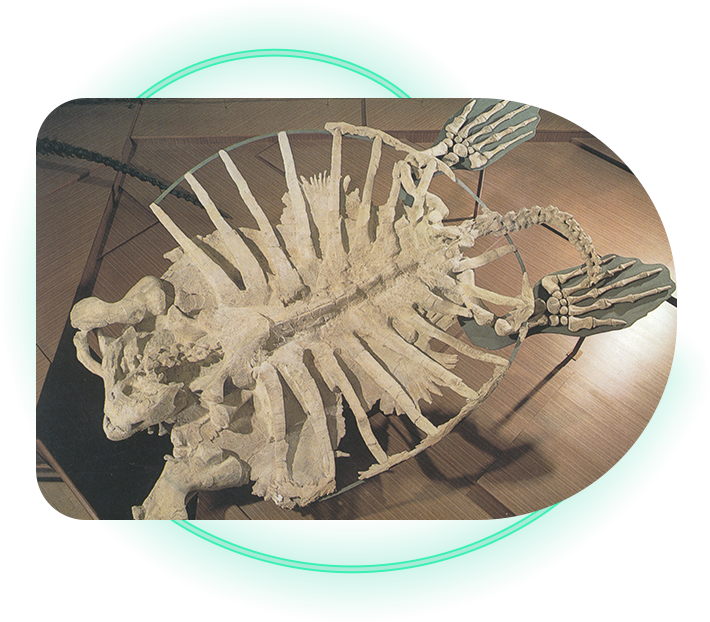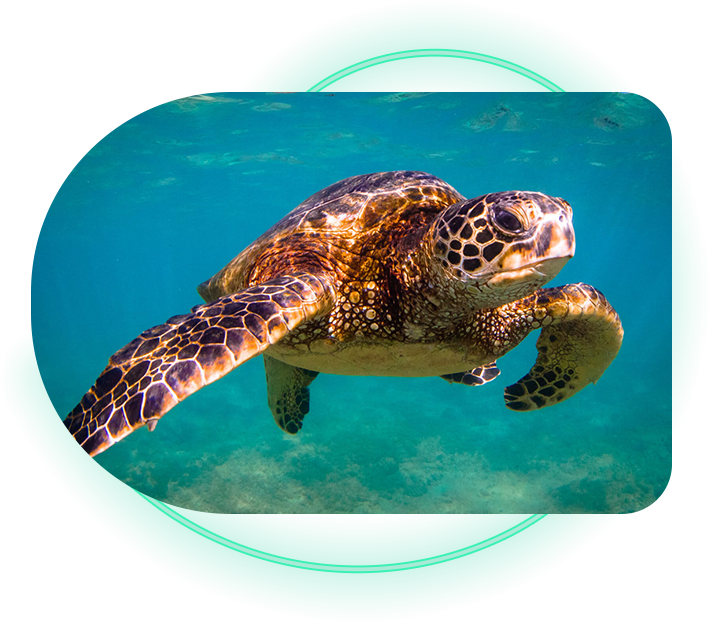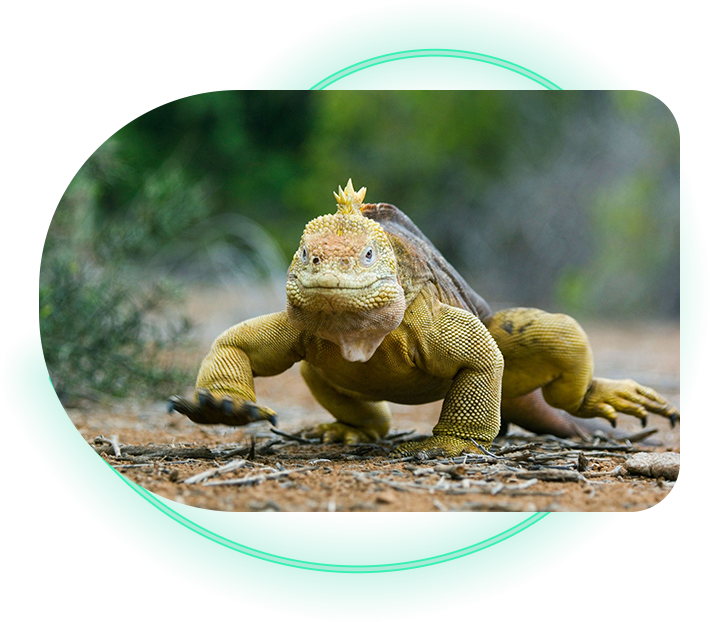Favorite CollLection Triceratops Real Figure Keyring
$11.95

Reptiles were the first animals to truly abandon the aquatic habitat and live and breed on dry land. Reptilian groups are very diverse and range from snakes and lizards to turtles and crocodiles. Some groups have taken-up life on dry land (even deserts), but others prefer an aquatic environment leaving the water only to nest. Fossil reptiles are known from Permian times to the present. Many of the extinct groups, especially those which lived in the ancient seas, grew to sizes rivaling the dinosaurs.

In the Mesozoic seas there were indeed sea monsters. Fossilized sea-swimming reptiles that were as long as T. rex, some even longer are known. Mosasaurs, plesiosaurs and ichthyosaurs all had representatives which grew to immense sizes.
Ichthyosaurs were a group of marine reptiles with a body-plan similar to the porpoise (a mammal). They flourished in the seas of the Triassic and Jurassic, gradually becoming less common in the Cretaceous seas as other marine reptile groups took command of the seas.
Plesiosaurs were a group of marine reptiles, perhaps best typified by the descriptions of the Loch Ness monster. These animals were represented by two basic forms – long-necked with a small skull, and short-necked with a large skull. Small ancestral forms developed in the Triassic seas, but by Late Cretaceous times some of these sea monsters were over 40 feet long. They became extinct by the end of the Cretaceous.

Mosasaurs were close relatives of the living monitor lizards. Adapted to a marine existence, they fed upon cephalopods, fishes and other marine reptiles. The heyday of the mosasaur was the late Cretaceous, in which sediments they are the most abundant marine reptile fossils found. BHIGR has collected mosasaur skeletons in the Pierre shale and Niobrara Formations in South Dakota, Wyoming and Kansas. Most are under 20 feet long, but a few grew to 40 feet, with skulls over 4 feet long. Mosasaurs became extinct with the dinosaurs at the end of the Cretaceous Period.
Sea turtles were also abundant in the Mesozoic seas. Perhaps the best known of these is the gigantic Archelon, of the late Cretaceous North American sea.

Reptiles have been on Earth since late in the Paleozoic Era. Many have adapted to terrestrial existence. Lizards and snakes are the most commonly recognized groups which inhabit the land. Other bizarre winged forms used to fly through the Mesozoic skies. Many reptiles today are specialized to survive the extremes of deserts, but because they are cold-blooded, none thrive in areas that have freezing temperatures year – round.
Pterosaurs were a highly specialized group of reptiles that took to the air. Known throughout the Mesozoic, these flying reptiles sometimes grew to enormous sizes. Some had wingspans in excess of 40 feet. Pteranodon, which soared in the sky above the Late Cretaceous interior seaway of North America, grew to more than 20 feet, wing-tip to wing-tip, and had a crested skull that was 3 feet long.
BHIGR has an excellent selection of fossil and cast replica reptiles available for sale.

Amphibians were the first tetrapods to venture from their primary aquatic environment onto the land. Amphibians first became abundant in the Carboniferous “coal forests”, and have persisted until today. Though living amphibians are never very large, in Permian times they grew to great sizes and diversified to fill many ecological niches now filled by large reptiles or mammals. Today, the best know of the amphibians are the frogs, toads, and salamanders. Due to the damp environment that most amphibians live in, very few are preserved as fossils.
BHIGR has a small selection of fossil cast replica amphibians available for sale.